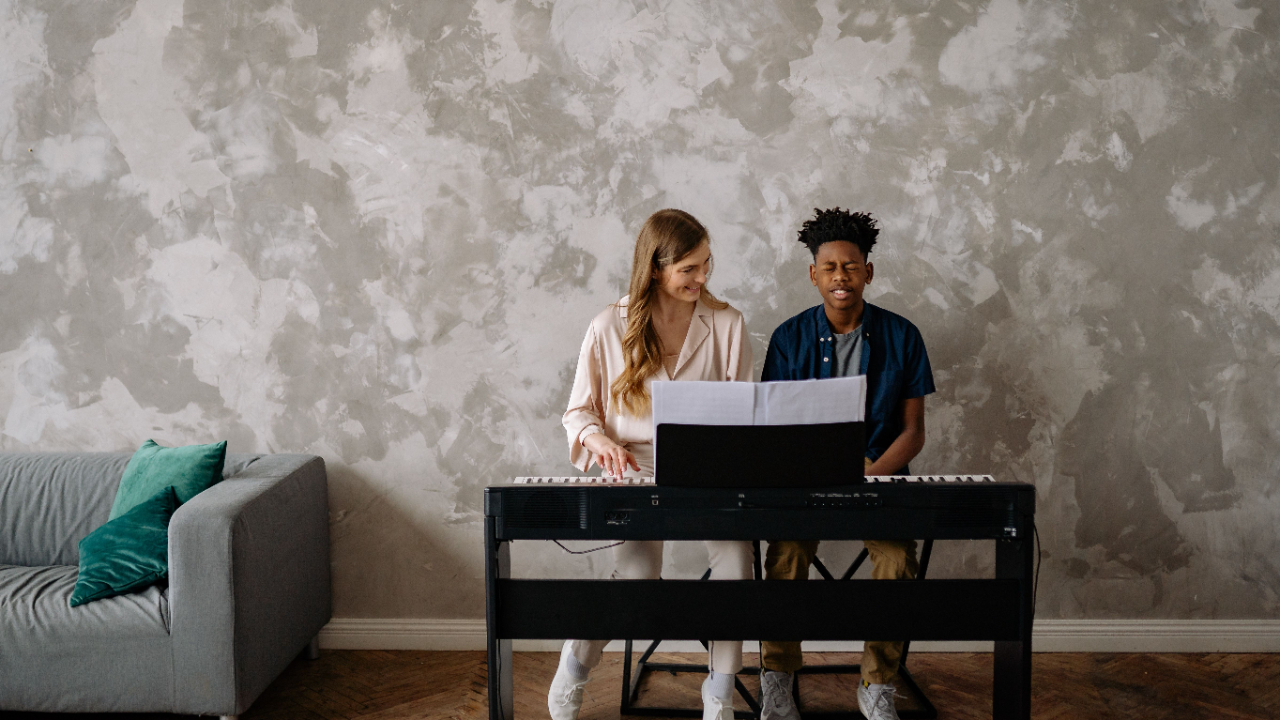Learn by Listening and Observing
Mar 10, 2023
When we are practicing and playing the piano, we are using a large part of our brain. No really - we are coordinating movement in both hands at the same time, our sense of vision, hearing, and touch are all activated, we’re prioritizing certain information AND making choices about what to prioritize in real-time, and different layers of memory are engaged at any given moment. That’s not even everything that your brain is doing - those are just the things I could list off the top of my head.
There is also a fair amount of ego wrapped up in playing and practicing, even if you don’t believe me. We are constantly evaluating - was that good? Why didn’t I do that right? What if I make a mistake?
And that’s a lot to add on top of all the other functions we’re trying to complete.
Watch this video if your ego is getting the best of you.
This is why learning while other people play is one of my favorite teaching techniques, and why it is so effective and powerful.
We have the ability to hear someone else play – and NOT be responsible for producing the sound! We haven’t spent hours and hours practicing the piece, agonizing over small details, and being invested in the process of learning and playing it. This allows us to remain slightly detached. We get to experience the piece in a different and unique way.
We can listen, tune in to the emotion, hear nuances we otherwise might not be able to hear, etc. And the best part is – when it comes time to work on the piece, we can learn from other people’s lessons!
Take, for example, one of my classes in the Casual to Confident Piano Player program. A participant played a piece beautifully. She finished, and we went around the Zoom room and congratulated her, and gave her some positive feedback. She then expressed that she wasn’t feeling very confident about the counting and rhythm in a certain section of the piece. I was so glad that she brought it up because it was a section of the piece that I wanted to address as well.
So we pulled up the music on the screen so that everyone could see it – and we began writing in counting and clapping and counting out loud. The whole class participated. We drilled, and went slowly, measure by measure until we had worked out the entire section of music. My student reported that she was feeling way better about the section and that she completely understood how to count it at that point.
But the best part – was that EVERYONE else in the class had strengthened their sense of rhythm as well! By following along with a new piece of music, they learned rhythm concepts they otherwise might not have learned. They focused on something they didn’t even realize they needed to focus. They each expressed their gratitude for the chance to focus on the rhythm of the piece because they knew they could apply the same concepts to their own pieces to improve.
THIS is what we do in Casual to Confident Piano Player. We connect, we work together, and we demystify the process of learning and practicing the piano. We break things down and make them SIMPLE. Join us today!
🎹 Get access to more videos and free practice challenges that will help you play beautifully by learning how to practice smarter, not harder! It all happens in my free Facebook group - JOIN FOR FREE!
Sight reading is the secret sauce behind beautiful and accurate piano playing that no one’s talking about!
Stay connected with news and updates!
Join our mailing list to receive the latest news and updates from our team.
Don't worry, your information will not be shared.
We hate SPAM. We will never sell your information, for any reason.
